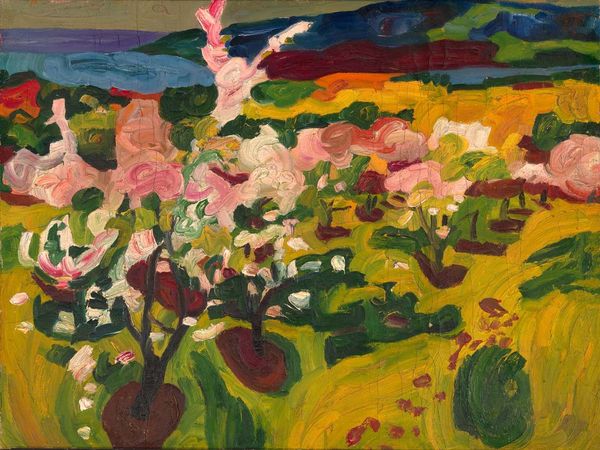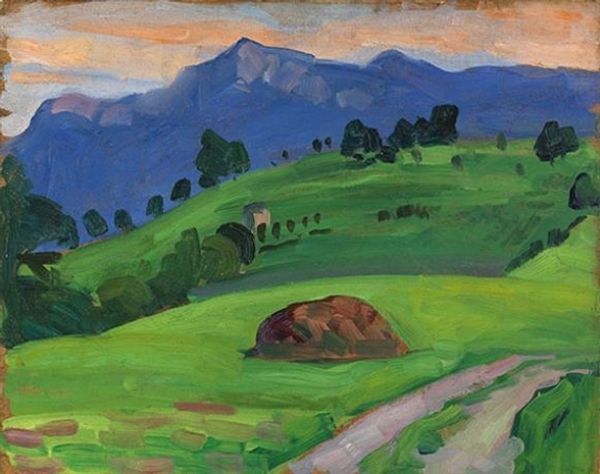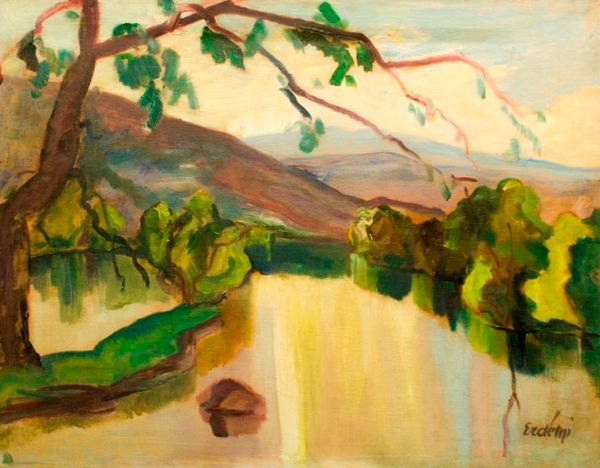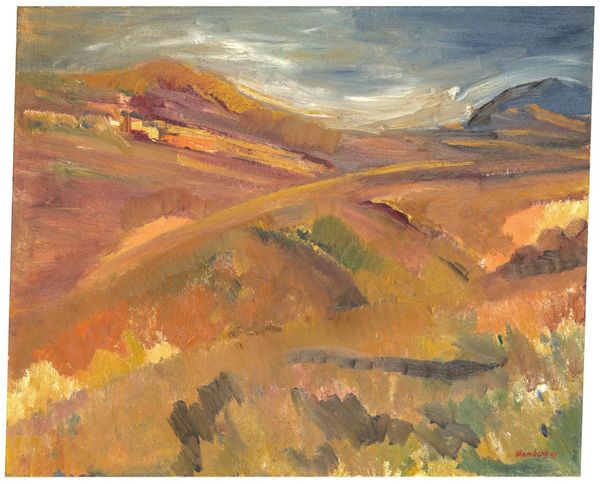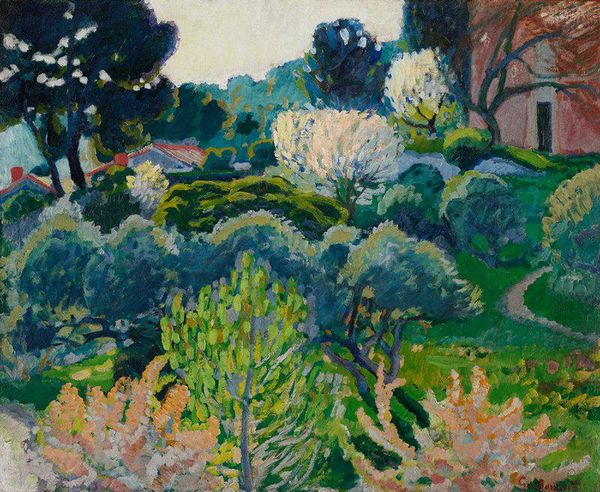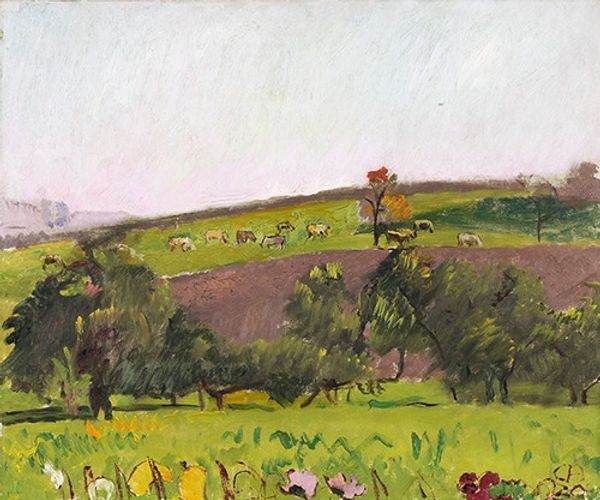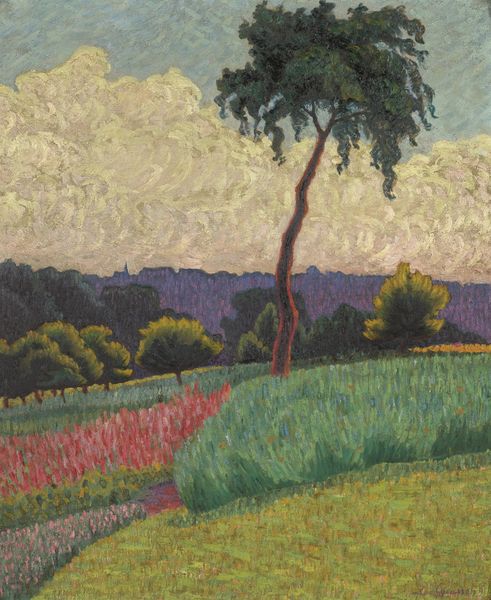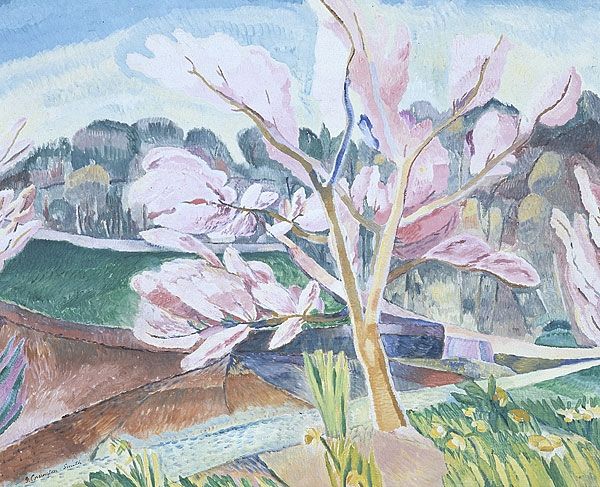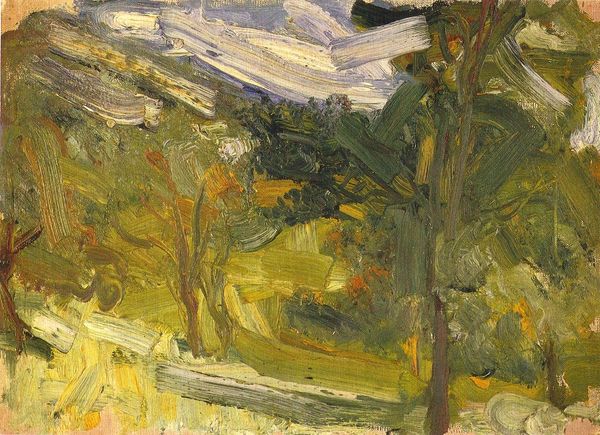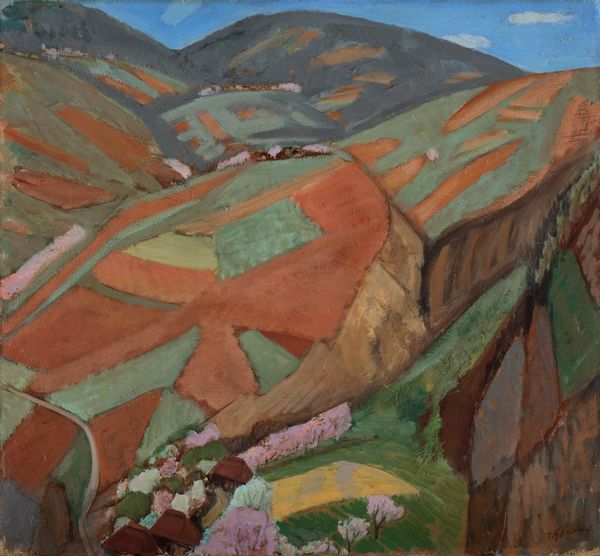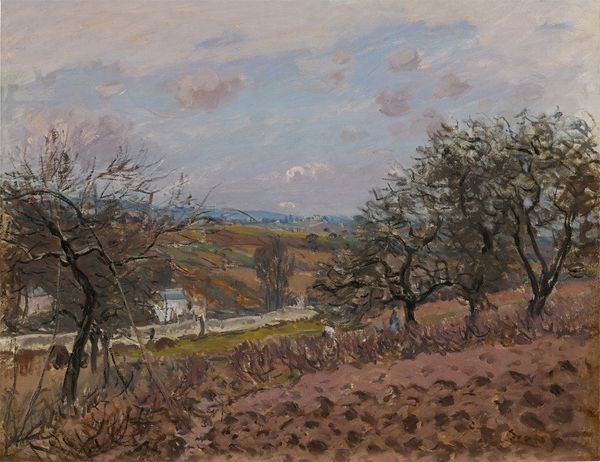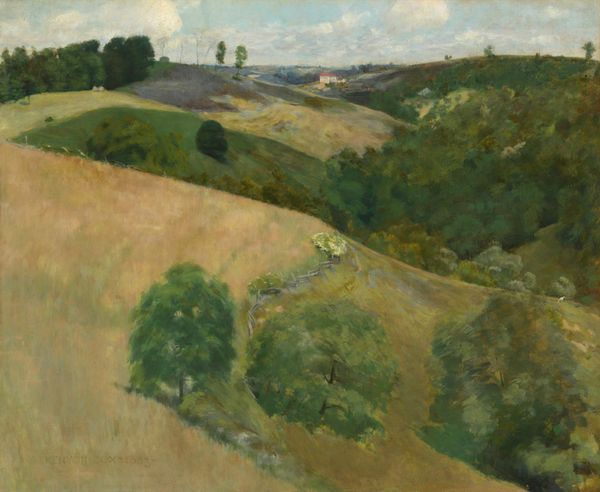
painting, oil-paint
#
painting
#
impressionism
#
oil-paint
#
landscape
#
impressionist landscape
#
oil painting
#
expressionism
#
genre-painting
#
expressionist
Copyright: Public domain
Editor: Fujishima Takeji’s "Spring Scene at Shodoshima," appears to be an oil painting. There is a brooding quality to this landscape, almost unsettling given the typical associations of spring with rebirth and light. What sense do you make of this work? Curator: It’s interesting you pick up on that tension. The use of impressionistic brushstrokes combined with a certain heaviness speaks volumes about the artist's context and choices. We must consider the public role of landscapes: historically, they represent not just nature, but also ownership, control, and even national identity. Do you see any visual cues that hint at Japan's rapid modernization during the late 19th and early 20th centuries? Editor: Perhaps the sharp, almost geometric fields? There is something very deliberate in the landscape’s organization, not like pure wilderness. Curator: Exactly. The regulated fields might mirror the institutional control of agricultural production, reflecting socio-political shifts occurring. And what of the pink blossoms contrasting sharply with the darkening sky above? Does that hold meaning to you? Editor: I am not certain but they provide hope despite a gloomy atmosphere and emphasize the cultural ties to Japanese art and the appreciation of nature’s cycles. Curator: Precisely. In Japanese culture, cherry blossoms carry significant weight—tied to ideas of mortality, beauty, and renewal, and sometimes harnessed for propaganda. Placing this familiar emblem against a more turbulent backdrop creates a compelling visual argument, even a commentary on the state of things in its time. Editor: I see now that it speaks to cultural changes and perhaps challenges in ways I didn't immediately notice. This approach to history can reveal more depth about how this piece relates to public narratives than analyzing aesthetics. Curator: Exactly. This painting demonstrates art’s function in public dialogues. Examining social, cultural, and historical perspectives enriches our engagement, revealing intricate layers of significance behind seemingly simple works.
Comments
No comments
Be the first to comment and join the conversation on the ultimate creative platform.
